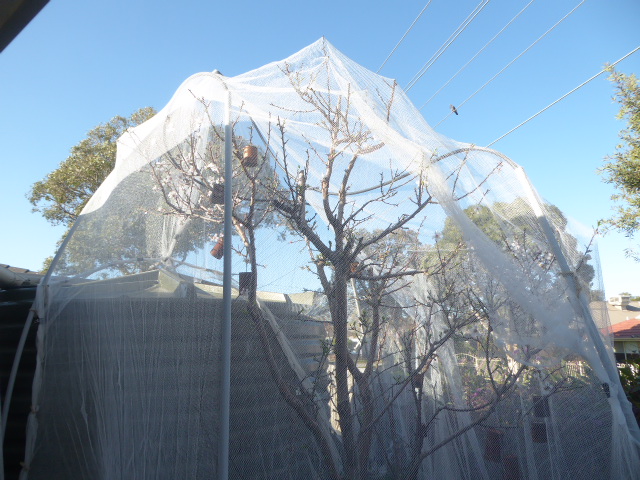posted 4 years ago
In terms of netting.
My technique that works for my needs eg to install each year, and to remove, and store is as follows.
I want to use pics, so I hope they load.
You need pairs to make an arch, and several to cover e.g. a tree with bird netting.
List of materials
- a metal rod, usually used for concreting or such apparently. Choose the height that suits you with a good proportion in the ground, and the rest above ground as the stabiliser and the boundary points. The metal rod is concealed INSIDE the electrical pipe.
- electrical or other hollow piping that will stand upright during wind, heat and storm. The height/length is according to your need. and preference. It has to be wide enough to be the female to recieve the poly pipe or such that arches over the tree or bed etc.
- poly piping or similar arching affect that goes inside the electrical piping, e.g. the male. The poly piping arches over what you want to protect like we see in the pics above in another post. The length of this piping needs to include what is inserted inside the electrical tubing to stablise it and then the arch, then inserted into another electical pipe opposite where this piping is located. The ends of the poly piping is concealed inside the top ends of 2x electrical pipes opposite the protected e.g. tree
- bird netting - netting needs to be BRILLANT WHITE so it is most distinctive in day or night to DISCOURAGE birds or wildlife getting entangled in it unsuspectingly. Netting needs to allow pollinators to pass through the holes e.g. so your fruit trees make fruit! So buy with this in mind. And you won't it to have a decent durability, e.g. a weight to it will help. Do your maths about how many ft/meters to cover all angles or sides or panels etc for what you need to protect and how you choose to overlap the edges so all is covered. You dont want to go to all that trouble and think its okay to have it a ft/300mm off the ground and find all work did nothing, and your harvest or preharvest growth is devoured by hungry wildlife after getting used to the netting and becoming brave enough to crawl underneath!!!
You will need:
- a means of pounding the metal rod into the ground.
- a ladder or step ladder or means of laying the netting over the arches that you create so you cover the top downwards.
- reusable ties or I use bull dog clips to secure the edges and its grip has a good grip and takes a full mouthful of layers of the netting if needed - they get rusty but they last for years, and you soak them in old oil to I suppose to prevent that if you are eager and have some.
Plan:
To plan where to put your metal stakes into the ground, stand back long enough to consider the growth space your tree or tomato bush will need. For the fruit trees the new growth will shoot through the top holes of the netting, which is fine (you can do as i do a late summer, post harvest, pre winter pruning early enough so there is some growth before the tree loses it leaves and the chill sets in). You can cut and drop the excess growth or it can be used for fire starts if they are significant shoots, or you may like to stand back before you start pruning the new growth that sits above the netting, and study it a while especially if this is developing tree. See what of those new shoots will set your tree up for a good size or shape or blossom for next season and tag them if that helps e.g. a ribbon on each, so you do no prune them harshly like you might most of them. After you have done you last Summer pruning, of the newest growth, then gently gently begin to peel back the netting, keeping the tagged new growth branches intact as best as possible as you remove the netting from each one, and essentially the whole tree.
However if you are experimenting like me, in light of hungry possums that love any growth on my apples, apricot almond and Melia (non fruiting native) I have begun to cover them not just to protect the fruit, but to let their leaves grow, and in case of my Almond, a couple of weeks ago I successfully covered it (so tall) to protect its blossoms and new leaves growing after its wintering (although it is still winter here - but almonds are the earliest of the bloomers apparently, so THIS YEAR I covered it for the first time IN WINTER to protect its blossom from the mighty possum. All the blossom is peaking now, its lovely, but ugly with the netting per se, however I needed to other wise no use keeping food plants if I can eat the food.
How many arches do you need to cover?
Do you want them like a tunnel or do you want them like a dome? How many pairs of stakes, piping and poly arches will suffice?
Then just go to it. Enjoy dressing your garden with netting or protector.
Or have i forgotten something significant here?
I will post this commentary, and then try and upload some pics. (I tried to up load pics early for something different and they did not load, so hopefully these do.
Jill of all and Misses of Targets -JMH

 1
1




 3
3











 1
1




 1
1




 1
1
















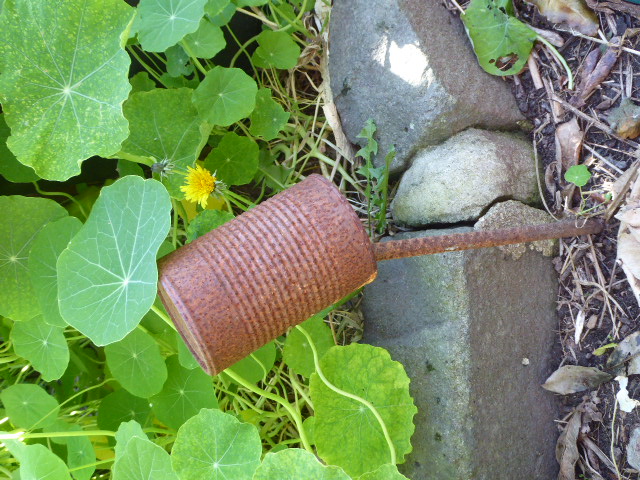




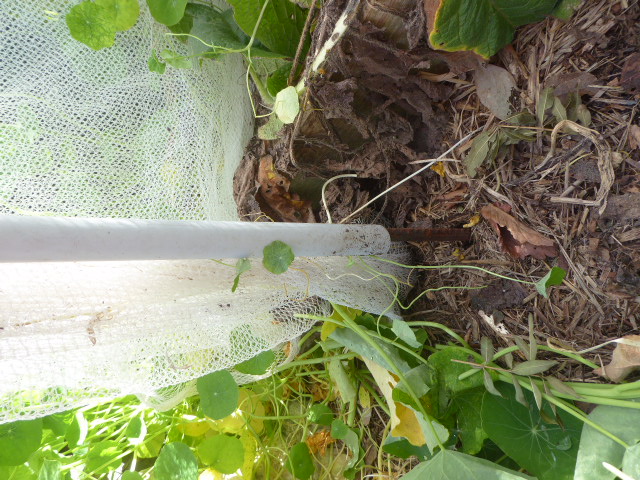




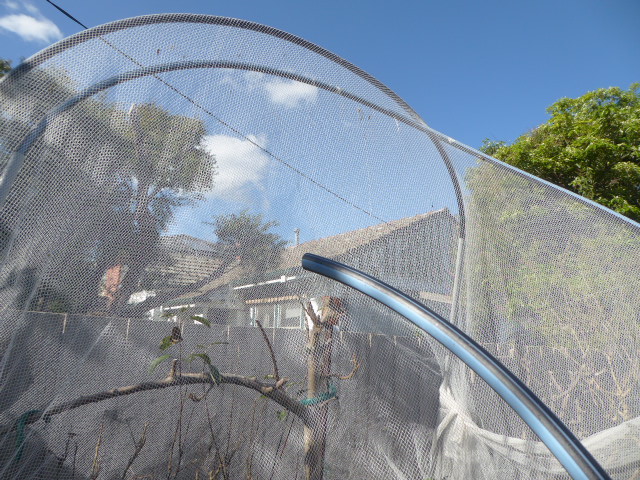
 1
1




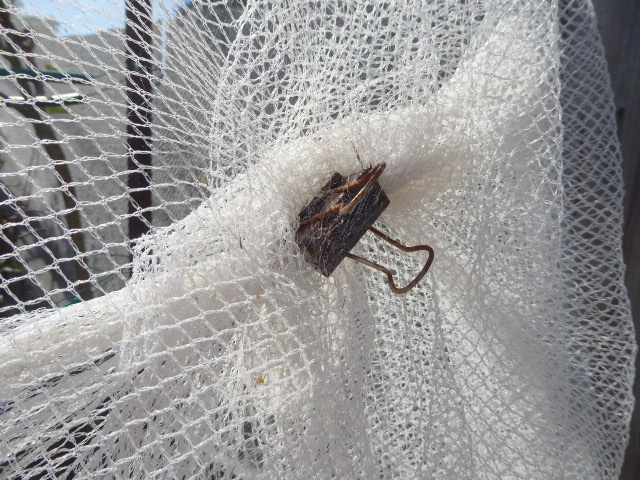
 1
1




